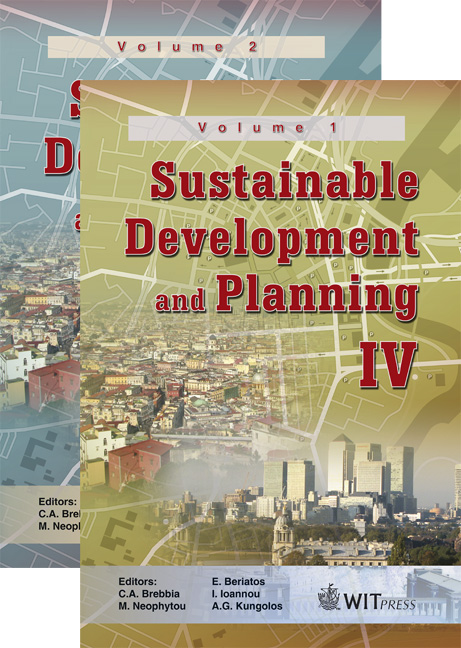An Analysis Of Statistics On The Capacity Of Tourism Attractions Between Mediterranean Countries
Price
Free (open access)
Transaction
Volume
120
Pages
9
Page Range
807 - 815
Published
2009
Size
281 kb
Paper DOI
10.2495/SDP090752
Copyright
WIT Press
Author(s)
G. Skonieczny & B. Torrisi
Abstract
The theory on the economic development attributed to the tourism sector plays a central role in the growth process of some zones of the world. Therefore, to determine the competition level and economic attraction of a territory, it is necessary to measure the most important sectors. Today, the Mediterranean area represents one of the prime areas of attraction and destination of international tourism. It has registered satisfactory performance with tourist arrivals. Within a similar trend, various countries have for many years programmed and mapped out the progress of the tourism sector with economic strategies of medium to long term periods. In reality, the research of a synthetic index and of the source of information regarding the characteristics of the tourism sector becomes an interesting instrument for developmental policies. However, when looking from a theoretical level to effectuate confirmation of the quantity of tourism, the difficulties presented are: availability of the basic data, verification of the minimum requisites of homogeneity and area comparability between different areas, specification of the correct modality of statistical handling, the building of indicators and so on. To study the sector’s behaviour in the Mediterranean area, it is necessary to obtain the characteristics of supply and demand that are not always common. These different characteristics influence the tourism sector’s success and development and produce different effects in the results of tourism balance. On grounds of these considerations, this present research analyses the structural and infrastructural characteristics of the tourism sector of Mediterranean countries in order to formulate a picture of the competitive capacity of the analysed territory. Such an objective has been attained through the use of methodological statistics outlaying the construction of indicators and the study of homogeneous and non-homogeneous territory at the base of analysed variables. Keywords: classification, territorial comparisons, tourism attraction index.
Keywords
classification, territorial comparisons, tourism attraction index.





